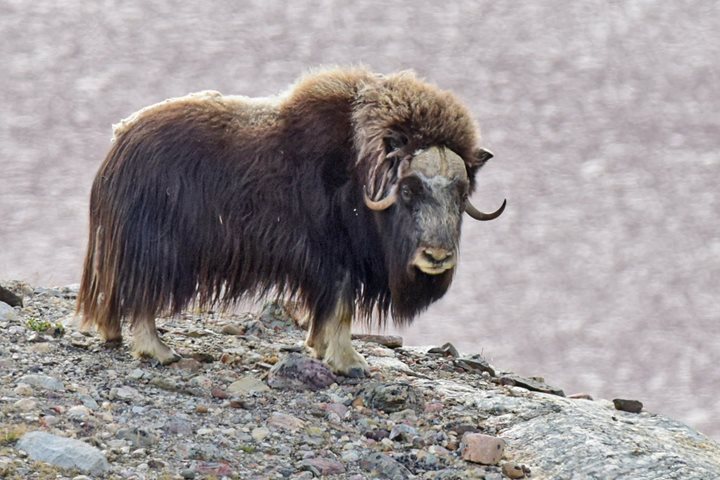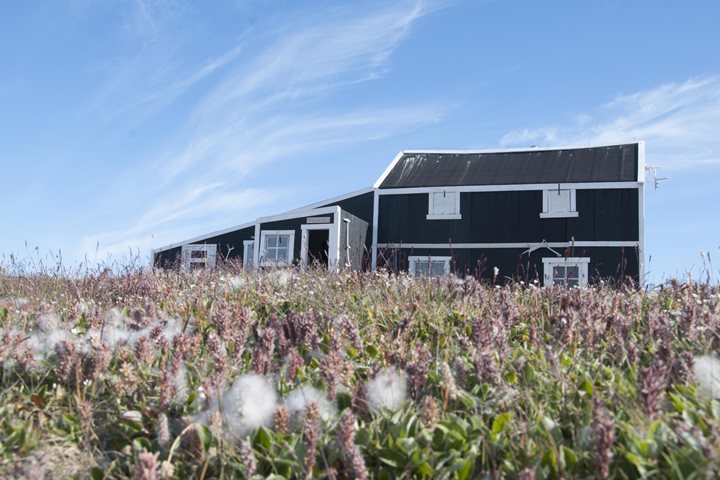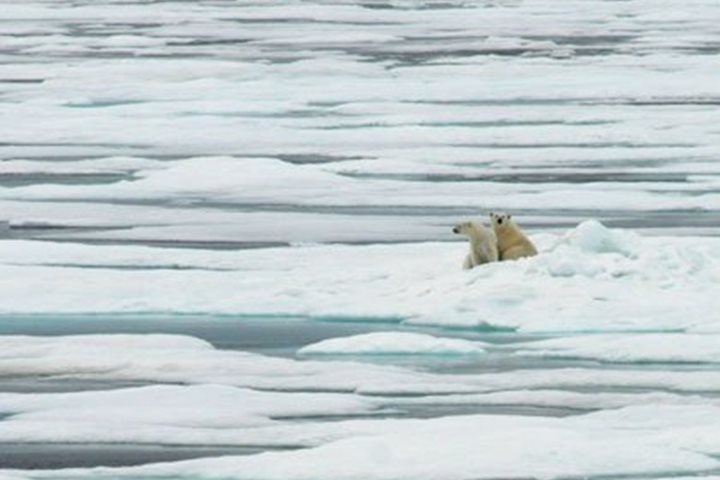We arrived at Nuuk on the western coast of Greenland at 7:00 a.m. this morning. It is the country’s capital and largest city with a population of just over 15,000. The settlement nestles at the foot of high mountain ridges and in recent years has seen a spread of housing into the hinterland of the core area of the city. The gaily painted buildings stand out in contrast to the more earthy colours of the local rock.
This area was first visited by bands of hunter-gatherers belonging to the Saqqaq culture sometime around 2,000 B.C. Living in small encampments along the coast, these people utilised the rich terrestrial and marine food resources that were seasonally available. Much later on, in the 10th century A.D., Norse explorers arrived from Iceland seeking out suitable sites along the deep fjord systems to establish farmsteads which would be used to raise livestock. Trading posts developed and were a lifeline to Europe for much needed commodities including timber and iron. It was around this same time that people belonging to the Thule culture arrived in the far north of Greenland and progressively spread south into this area. These were referred to as “skraelings” by the Viking settlers and are the ancestors of the modern-day Inuit.
Split into a number of groups, we visited the city’s National Museum. This is a veritable treasure trove of the material and cultural heritage of Greenland. Charting human occupation from ancient times, the displays highlight the sheer tenacity of the various peoples who survived in an often challenging environment. Demonstrating their consummate skills, case after case was brim-full of artefacts including tools, hunting equipment, domestic utensils, children’s toys and clothing fashioned in a wide variety of materials. Amulets opened a window on the more esoteric and ephemeral aspects of these hunter-gatherers.
A highlight was the sensitive exhibit containing four of the mummies discovered in 1972 at Qilakitsoq, an erstwhile Thule coastal habitation much further to the north. It included the young baby which caught the publics’ imagination when the cache of remains was initially examined. Sensitively displayed, the three females and baby appeared to be suspended in air. Clothed and wrapped in sealskin blankets, they had been prepared for the long, cold journey into the next life over 500 hundred years ago. Literally coming face to face with ancient Thule people, we were mesmerised.
We also visited with local people in their homes. This was an opportunity for us to engage with the surviving, living cultural heritage of the Greenlandic people - the descendants of the Thule. Song and story, orally transmitted down through the generations, were shared with us by our welcoming hosts. There is little doubt that this was a resonation of oral heritage shared around hearths in Thule homes centuries ago, an echo of human spirit.
After dinner, as a finale to a wonderful day in Nuuk, a sperm whale surfaced. Once the sighting was announced we made our way to the bow and managed to get a close look as it prepared for a deep dive to feed. Its blows were clearly audible. With cameras poised for action, we waited for the imminent dive. And how impressive it was when it finally came; the flexing muscles, the rigid vertebrae of the lower back and then the huge fluke, vertically poised for a moment before disappearing, leaving only a gently dissipating “footprint” on the surface of the pond-calm, slate-grey water.







